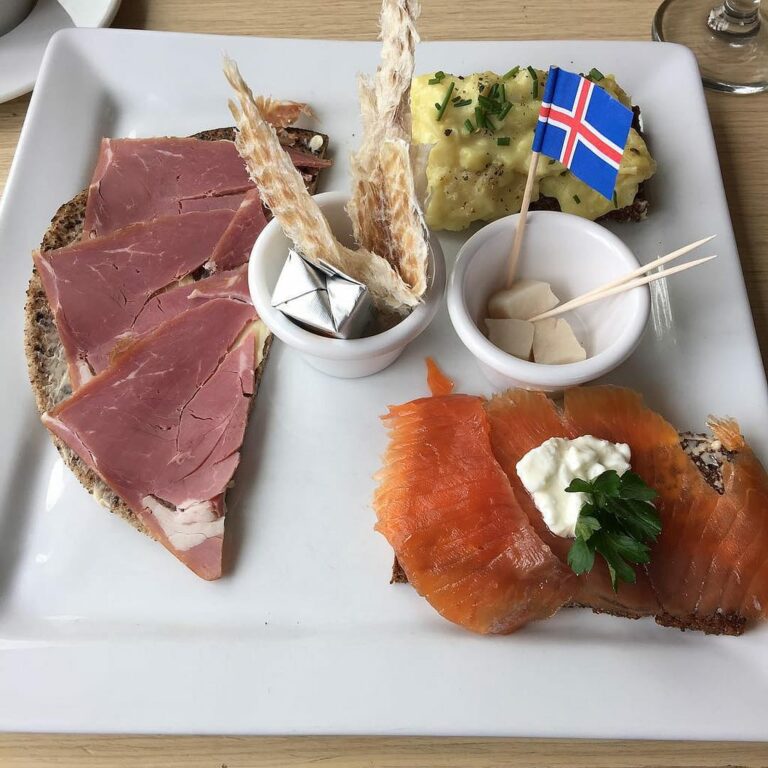Introduction: Icelandic Cuisine and Viking Heritage
Icelandic cuisine is often described as rustic, hearty, and simple, with a strong emphasis on using fresh, local ingredients. The country’s harsh climate and remote location have influenced its culinary traditions, which rely heavily on preserving food through smoking, drying, and fermenting. However, beyond these practical considerations, Icelandic cuisine also reflects the country’s rich cultural heritage, which is deeply intertwined with Viking history.
The Diet of the Vikings: What Did They Eat?
To understand the influence of Viking culture on Icelandic cuisine, it’s helpful to first consider what the Vikings ate. While their diet varied depending on the region and time period, they were known for consuming large quantities of meat, fish, and dairy products. They also ate a variety of grains, fruits, and vegetables when available, but these were less common in their diet. The Vikings were skilled at preserving food through techniques like salting, smoking, and drying, which allowed them to store large quantities of food for long periods of time during harsh winters and extended sea voyages.
Icelandic Culinary Traditions: The Historical Context
Iceland was first settled by Norsemen in the 9th century, and over the next few centuries, the country developed its own unique culinary traditions. These early Icelandic settlers relied heavily on fishing and farming for sustenance, much like their Viking ancestors. They also developed a range of preservation techniques to make their food last through the long, cold winters. One of the most notable of these techniques was the creation of hákarl, a fermented shark meat that is still considered a delicacy in Iceland today.
Traditional Foods with Viking Roots in Icelandic Cuisine
Many of the foods that are still popular in Iceland today have clear Viking roots. For example, lamb is a staple of Icelandic cuisine, and it was a favorite meat of the Vikings. Another popular dish is skyr, a type of cultured dairy product that is similar to yogurt. Skyr was likely introduced to Iceland by Viking settlers, and it has remained a key part of Icelandic cuisine ever since. Other traditional foods with Viking influences include rye bread, smoked fish, and pickled vegetables.
Modern Icelandic Cuisine: How Viking Influences Survive
While many of the traditional foods of Iceland have clear Viking roots, modern Icelandic cuisine has evolved to incorporate a wider range of flavors and ingredients. Nonetheless, the Viking legacy remains an important part of Icelandic culinary traditions. Today, chefs in Iceland often draw on traditional recipes and ingredients, such as Icelandic seaweed and wild herbs, to create modern interpretations of classic dishes. Additionally, many Icelandic restaurants and food producers emphasize the country’s Viking heritage as a point of pride and distinction.
Conclusion: Icelandic Cuisine – A Reflection of Viking Heritage
In conclusion, Icelandic cuisine is deeply rooted in Viking history and culture. From the preservation techniques used to store food through long winters to the emphasis on meat, fish, and dairy in the diet, the influence of the Vikings is clear. While modern Icelandic cuisine has evolved to incorporate new flavors and techniques, the Viking legacy remains an important part of the country’s culinary traditions. For visitors to Iceland, experiencing its unique cuisine is a chance to taste a piece of the country’s rich cultural heritage.

